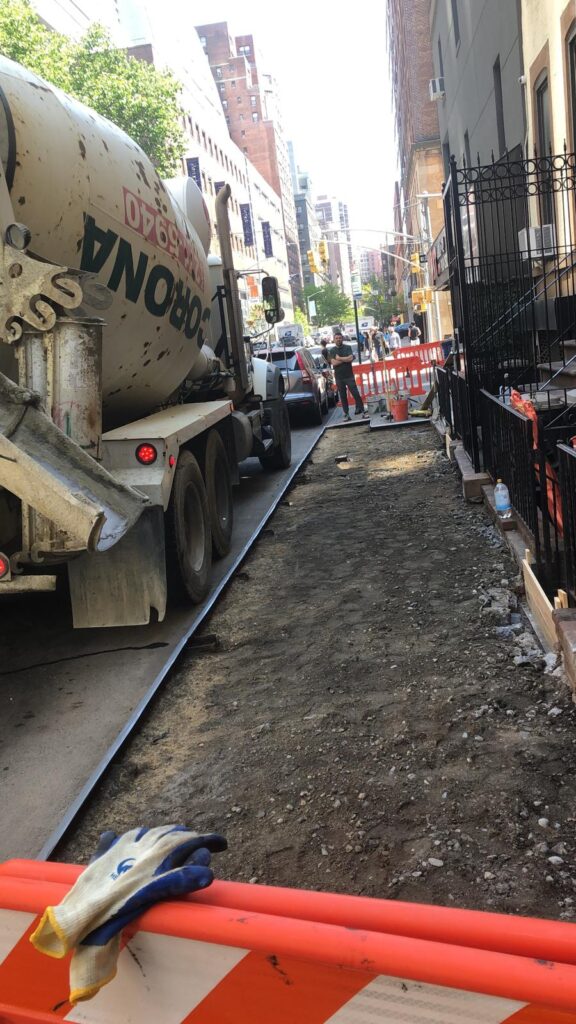Brooklyn, a borough pulsating with energy and diversity, is crisscrossed by a network of sidewalks that witness the daily ebb and flow of its vibrant life. From bustling commercial districts to quiet brownstone streets, these concrete pathways are more than just passageways; they’re an integral part of the borough’s character. But like any well-worn path, Brooklyn’s sidewalks inevitably succumb to wear and tear, necessitating restoration projects.
This article delves into the world of sidewalk restoration in Brooklyn, empowering residents and property owners with the knowledge to navigate this crucial maintenance process.
Why Sidewalk Restoration Matters
Cracked, uneven, or missing sidewalk flags pose a safety hazard for pedestrians. These defects can cause trips, slips, and falls, leading to injuries. Beyond safety, well-maintained sidewalks contribute to:
- Accessibility: Smooth sidewalks ensure equitable passage for everyone, including those using wheelchairs or walkers.
- Community Aesthetics: Cracked and crumbling sidewalks detract from the visual appeal of Brooklyn’s streetscapes.
- Property Values: Sidewalk restoration can enhance the curb appeal of a property, potentially increasing its value.
Who’s Responsible?
The responsibility for sidewalk repair in Brooklyn falls primarily on property owners. According to Chapter 19 of the New York City Administrative Code, property owners are obligated to keep the sidewalks adjoining their properties in a good state of repair. This includes fixing cracks, holes, and uneven surfaces, as well as removing snow, ice, and debris.
The NYC Department of Transportation (DOT) plays a crucial role in ensuring sidewalk safety. The DOT inspects sidewalks and issues violations to property owners for neglected repairs. If a sidewalk defect remains unaddressed after a designated period, the DOT can step in, complete the repairs, and bill the property owner.
The Restoration Process
So, you’ve noticed a damaged sidewalk section in front of your Brooklyn property, or perhaps received a violation notice from the DOT. Here’s a breakdown of the sidewalk restoration process:
- Hiring a Contractor: Unless the repair is minor (less than 25 square feet and not a violation), you’ll need to hire a licensed contractor with experience in sidewalk restoration.
- Permits and Inspections: The contractor will secure a sidewalk opening permit from the DOT. This process typically involves submitting detailed plans and paying fees. DOT inspectors will visit the site throughout construction to ensure adherence to regulations.
- Restoration Work: The specific steps involved will vary depending on the damage’s severity. Generally, the process involves:
- Demolition: Removing existing damaged sidewalk flags.
- Excavation: Preparing the base for the new sidewalk.
- Sub-Base Installation: Laying a foundation of crushed stone or gravel for stability.
- New Sidewalk Flag Installation: Installing new sidewalk flags, ensuring proper alignment and slope for drainage.
- Curing: Allowing the concrete to cure properly before pedestrian use.
Minimizing Disruption
Sidewalk restoration can disrupt pedestrian traffic. Here’s how to manage the inconvenience:
- Signage: The contractor is required to post clear signage informing pedestrians about the construction and detours.
- Pedestrian Access: Maintaining a minimum of five feet of unobstructed sidewalk for pedestrian passage is mandatory. If this isn’t feasible, an “Occupancy of Sidewalk Permit” is required.
- Communication: Property owners should communicate with local businesses and residents regarding the construction schedule and potential disruptions.
Additional Considerations
- Cost: The cost of sidewalk restoration varies based on the damage’s extent, materials used, and contractor fees. Property owners are responsible for all costs associated with the project.
- Tree Roots: Tree roots can cause sidewalk damage. If tree roots are the culprit, a permit from the NYC Parks Department might be necessary before construction begins. The contractor will need to take steps to protect the tree during repairs.
- Historic Districts: Special regulations and materials might apply for sidewalk restoration in Brooklyn’s historic districts. Property owners in such areas should consult the NYC Landmarks Preservation Commission for guidance.
Brooklyn Resources
For Brooklyn residents and property owners navigating sidewalk restoration, here are some helpful resources:
